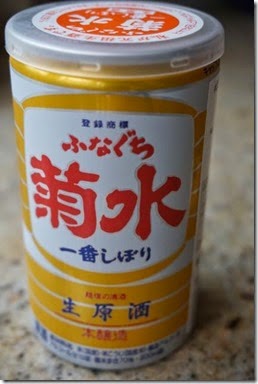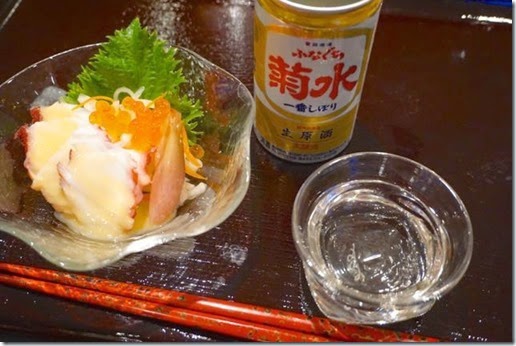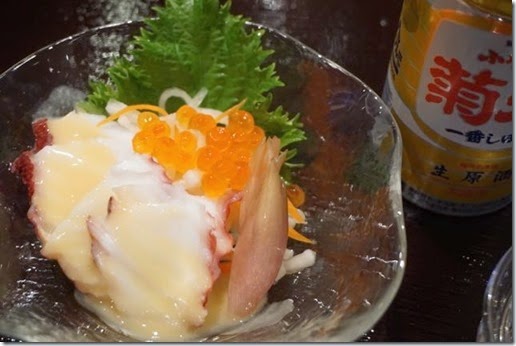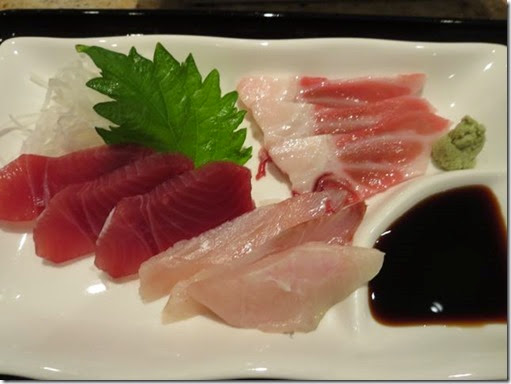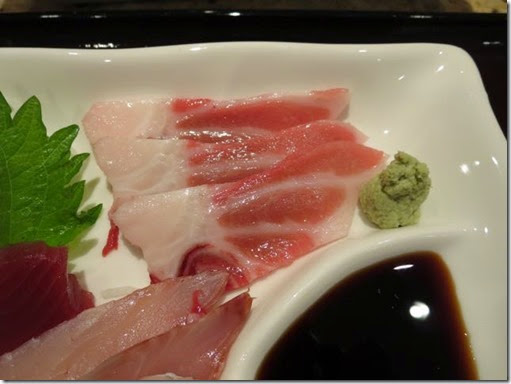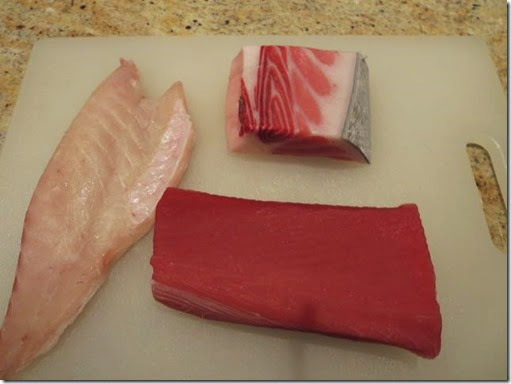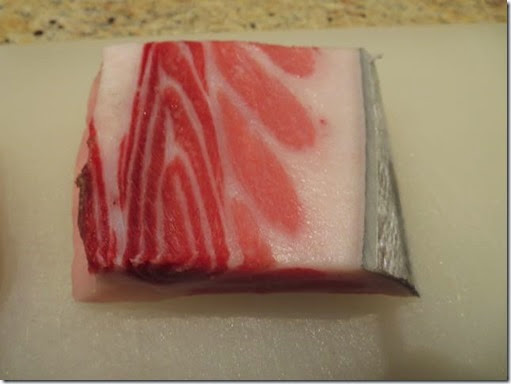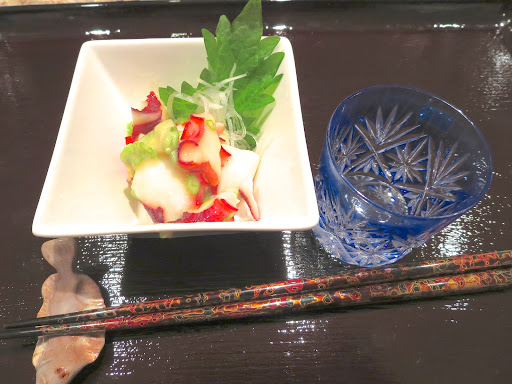The picture below is one of two servings I made from this otoro. As you can see, I sliced rather thick pieces. One set (on the right) was done in "aburi" 炙り or seared with a kitchen torch.
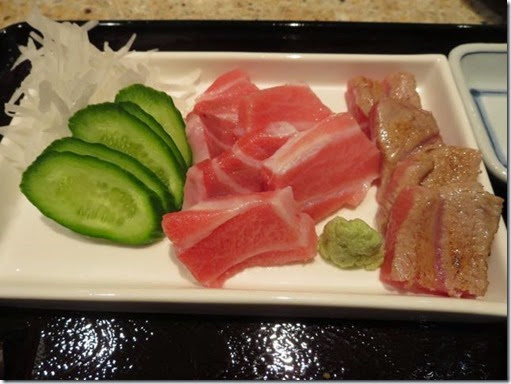
For libation, we opened American brewed dai-ginjou from California Yamadanishiki, "Shou-Chiku-Bai" 松竹梅.
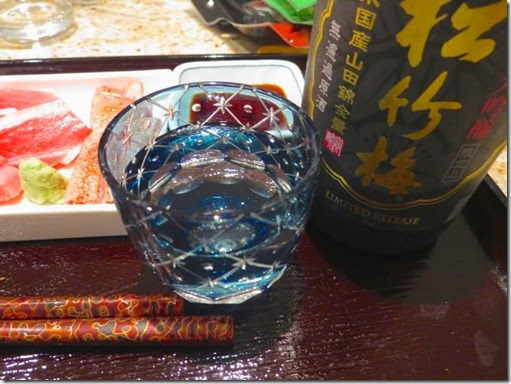
We are happy to report, this otoro was much much better than the previous one. It was nicely fatty and melted in the mouth. The Aburi" preparation adds an almost rare beef-like texture and additional charred flavor which nicely cuts the unctuous fattiness.
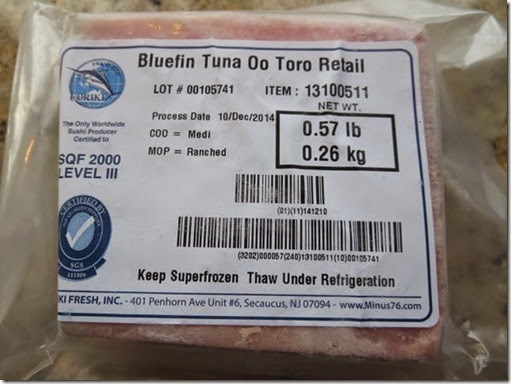
This is how it arrived 260 grams.
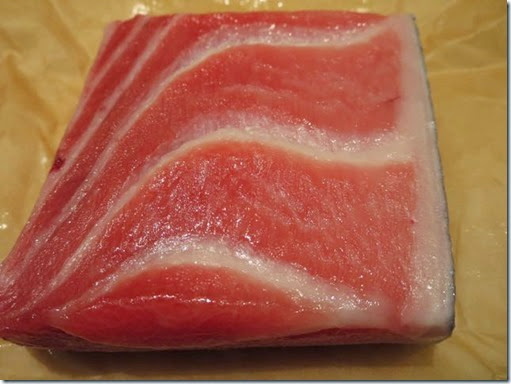
After thawing as per the instruction. Nice layering of fat.
We were impressed with Fish-for-sushi. They really redeemed themselves with their response. Adding them to our repertoire gives us two good sources of tuna sashimi (Catalina offshore products and Fish-For-Sushi). Having frozen sushi fish is nice since we can buy and hold it until needed like for New Year's Eve.
Addendum: Since I was so delighted I decided to order another otoro. The below was what I received.
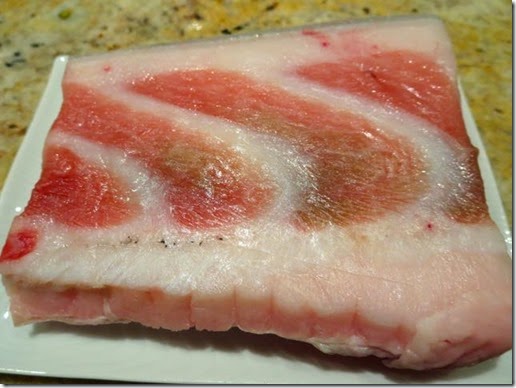
Again, it had a quite large amount of pure fat which I removed (below).
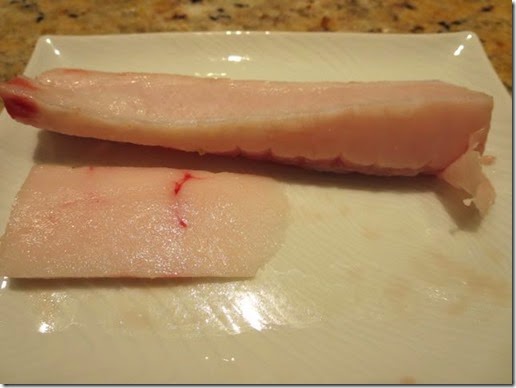
Since the fat has a very firm texture, I generally don't include it as part of the otoro slice. So, as usual, I cut the fat which I had separated from the block into small cubes and mixed with chopped chives and dressed with karashi sumiso 芥子酢味噌.
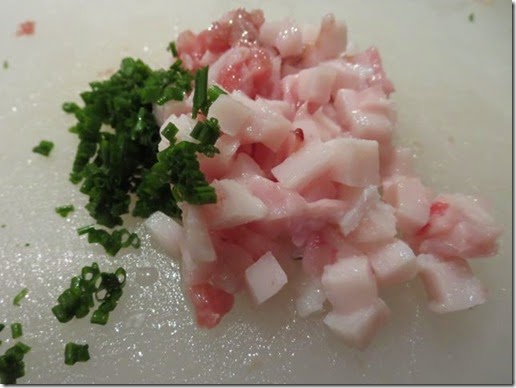
I sliced the rest of the otoro. I served this with ankimo 鮟肝 and vinegared octopus also dressed in karashi sumiso.
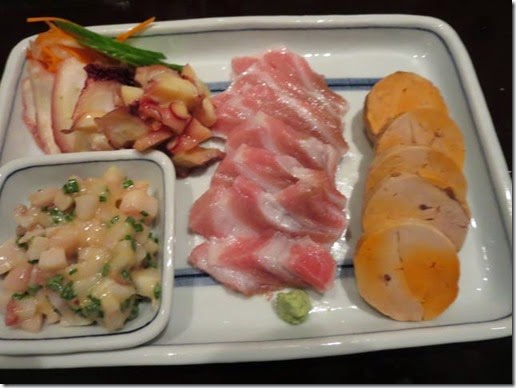
Here is the close up.
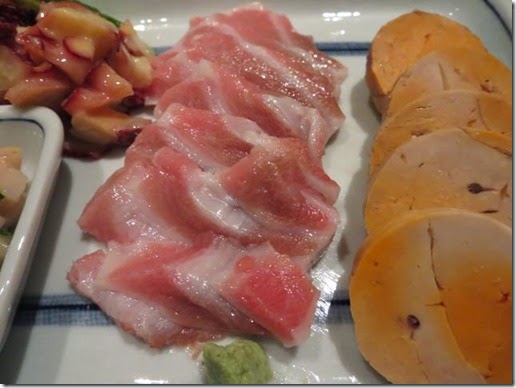
When all was said and done of the 260 grams (the same amount as in the first pictures above) the amount of otoro itself was just enough for two servings of otoro but there was not enough for the serving of aburi included in the first pictured serving above. Instead we had a nice serving of fat, as they said, things could be variable.








